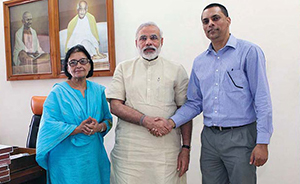How to bridge India’s tech-induced skill gap
The world stands on the brink of the Fourth Industrial Revolution, powered by a wide range of new technology breakthroughs ...
The world stands on the brink of the Fourth Industrial Revolution, powered by a wide range of new technology breakthroughs—Artificial Intelligence, Machine Learning, advanced robotics, Internet of Things, cloud computing and 3D printing—and the revolution is expected to result in major changes in the labor market globally by reducing the demand for middle-skilled workers doing repetitive tasks, and increasing the demand for more highly-skilled workers and also low-skilled workers doing non-routine work.
While many developed countries, such as the US, Japan and several European economies, are already experiencing this labor market polarisation, the market is also hollowing out in many developing countries--although at a rate slower than the developed world (World Development Report, 2016).
In India's case, this polarisation can be seen in the organised manufacturing sector, where the share of high-skilled occupations in total manufacturing employment increased by more than three percentage points, while the share of middle-skilled jobs decreased by 6.3 percentage points from 1993-94 to 2011-12. Looking at the impact of technological progress on various manufacturing industries in India, capital-intensive industries—automobile manufacturing, for instance—have a greater probability of adopting advanced automation and robotic technologies, compared to the labor-intensive manufacturing industries such as textile, apparel, leather, and footwear, and paper manufacturers.











Comments.